Kachina Doll (Powaung Katsina)
Arts of the Americas
In the southwestern United States, a supernatural being that represents a life-force or embodies a natural phenomenon such as the sun, the moon, a plant, or an animal is called a koko by the Zuni and a katsina (commonly anglicized as “kachina”) by the Hopi. Such beings have the power to control rainfall, crop growth, and fertility; to cure and protect; and to act as messengers between the gods and human beings. Carved kachina figures, also known as kachina dolls, are representations of these spirits and can have a sacred or an educational purpose. During some ceremonies, the carvings are given to community members to reward virtuous behavior, recognize a recent marriage, or teach children about religion. In the 1800s, a lively market for the carvings developed among non-Native collectors and tourists, giving rise to the elaborate art form that flourishes today.
MEDIUM
Cottonwood root, acrylic paint, yarn,metal bells, feathers, leather, cotton
DATES
1960–1970
DIMENSIONS
14 1/2 × 5 × 6 1/2 in. (36.8 × 12.7 × 16.5 cm)
(show scale)
SIGNATURE
Signed on base Henry Shelton Oraibi AZ with an arrow
ACCESSION NUMBER
2010.6.12
CREDIT LINE
Gift of Edith and Hershel Samuels
CATALOGUE DESCRIPTION
Flute (Lenang) Kachina. Associated with bringing water to the springs he appears during the Powamuya ceremony in February. He had the PR arm raised and holds a blue gourd rattle and the wrist has a yarn tie. The PL arm is down holding a flute with feathers dangling from it while the wrist has a carved armband simulating metal with turquoise in the center. His PR leg is raised and painted blue. PL leg is down and painted yellow. Both legs have short blue boots, his knees are striped yellow and blue and both have a band of bells tied to them. The bare chest is painted flesh colored with yellow on the PL breast and blue on the PR. He wears a carved Hopi kilt. On his back he wears a multicolored yellow, blue and red backpack trimmed with red fringed yarn, topped with feathers and lower edged with cotton. Underneath this peeps out a carved wood fox tail. He has a blue face painted with diagonal yellow and black stripes in triangles on the cheeks, slit eyes and triangular mouth. He wears feathers on the back of his long black hair.
MUSEUM LOCATION
This item is not on view
CAPTION
Henry Shelton (1929–2016). Kachina Doll (Powaung Katsina), 1960–1970. Cottonwood root, acrylic paint, yarn,metal bells, feathers, leather, cotton, 14 1/2 × 5 × 6 1/2 in. (36.8 × 12.7 × 16.5 cm). Brooklyn Museum, Gift of Edith and Hershel Samuels, 2010.6.12. Creative Commons-BY (Photo: Brooklyn Museum, 2010.6.12_front_PS2.jpg)
IMAGE
front, 2010.6.12_front_PS2.jpg. Brooklyn Museum photograph, 2009
"CUR" at the beginning of an image file name means that the image was created by a curatorial staff member. These study images may be digital point-and-shoot photographs, when we don\'t yet have high-quality studio photography, or they may be scans of older negatives, slides, or photographic prints, providing historical documentation of the object.
RIGHTS STATEMENT
Creative Commons-BY
You may download and use Brooklyn Museum images of this three-dimensional work in accordance with a
Creative Commons license. Fair use, as understood under the United States Copyright Act, may also apply.
Please include caption information from this page and credit the Brooklyn Museum. If you need a high resolution file, please fill out our online
application form (charges apply).
For further information about copyright, we recommend resources at the
United States Library of Congress,
Cornell University,
Copyright and Cultural Institutions: Guidelines for U.S. Libraries, Archives, and Museums, and
Copyright Watch.
For more information about the Museum's rights project, including how rights types are assigned, please see our
blog posts on copyright.
If you have any information regarding this work and rights to it, please contact
copyright@brooklynmuseum.org.
RECORD COMPLETENESS
Not every record you will find here is complete. More information is available for some works than for others, and some entries have been updated more recently. Records are frequently reviewed and revised, and
we welcome any additional information you might have.
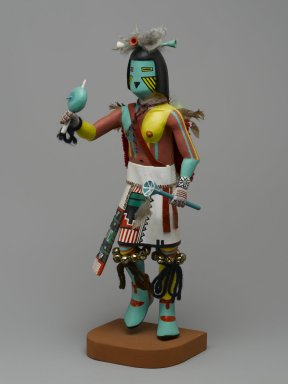

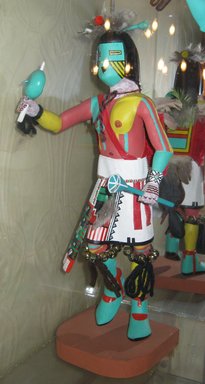
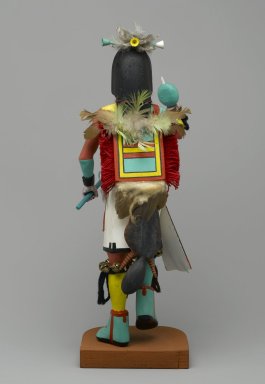

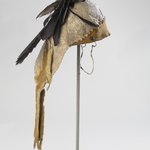

![Kachina Doll (Kwahu [Eagle])](https://d1lfxha3ugu3d4.cloudfront.net/images/opencollection/objects/size2_sq/CUR.2010.6.13.jpg)
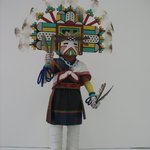
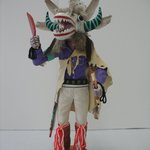
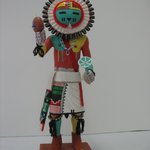
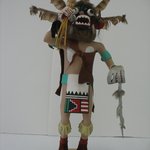
![Kachina Doll (Angwusnasomtaqa [Crow Mother])](https://d1lfxha3ugu3d4.cloudfront.net/images/opencollection/objects/size2_sq/2010.6.2_front_PS2.jpg)
![Kachina Doll (Kwahu [Eagle])](https://d1lfxha3ugu3d4.cloudfront.net/images/opencollection/objects/size2_sq/2010.6.10_front_PS2.jpg)
